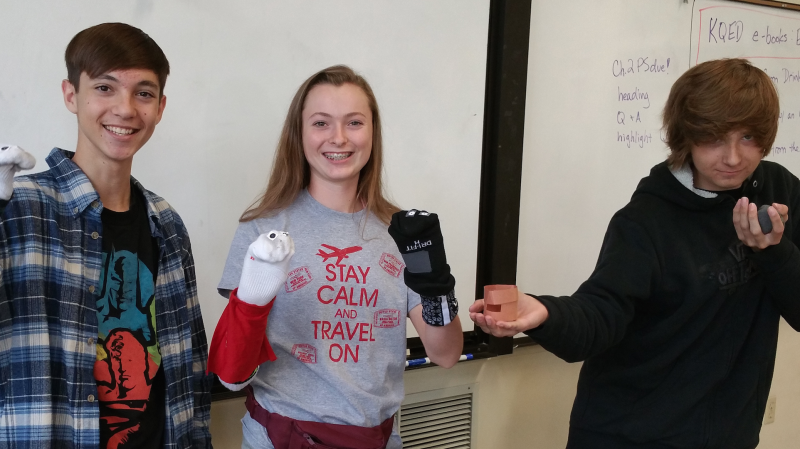One of my major goals in our science classroom is to connect our work to the daily lives and priorities of students – making what we do in class personally relevant and engaging. I also strive to broaden students’ ideas about who scientists are in ways that emphasize the diversity of purpose, talent, and backgrounds they possess, and to connect the work of science to social progress and human empathy. After spending time together investigating different types of scientific research projects and scientific and engineering design principles, we used KQED’s E-book series, Engineering Is… (http://ww2.kqed.org/education/e-books/) as a way to connect our technical, content driven work back to the needs of real people and present day communities.
The goal for this three day mini-project was for students to spend two days exploring one of the four E-book resources about the following topics: creating an efficient cook stove, designing an origami microscope, specialized research techniques in the deep ocean, and an affordable clean water filter. For the final session, student groups would then use some sort of performance to share their story with the class. My only rules were to engage the audience with the content, and to stretch themselves beyond traditional slide presentations and book report type summaries.
Recently, I had been introduced to the idea of soundscapes as a way for students to tell stories in their learning environments. After creating my own and exploring resources online, I decided to include the idea of using soundscapes to present a story as an option for our mini-project. I enthusiastically introduced the idea of using a soundscape as a creative presentation possibility and gave a short description of my work with them and how much I had enjoyed researching the ways people use sound to tell stories. I announced that I was happy to show some examples and talk more about my experiences if anyone was interested. One by one during the brainstorming and research sessions, groups came up to ask me more about soundscapes. I showed them the storyboard I had created for my group soundscape and described the sounds we used for each phase of the story I had drawn. Although the story I used as an example was a very simple one, the students were really interested in the idea of incorporating sounds into their stories. They immediately began asking if they could experiment with sounds made from objects in the room or to go outside to record sounds of their own to see how they might fit with their presentation ideas.
On the day of presentations, I had no idea what to expect and sat down to enjoy the show. Each group had five minutes to present, with two groups presenting each of the four E-book stories. My thinking was that by hearing each story twice, students would be able to discuss the science and engineering practices in more depth and that each presentation would have unique strengths that could engage the audience and specifically for my students working on their language skills, broaden their understanding.
The first presentation happened to be a soundscape. After we all closed our eyes, the student group led us through a narrated script with sounds coming from all around us, setting the scene where a child in an outdoor environment would need to go to the doctor and how differently that would look here in the U.S. in comparison to other locations eventually leading to the need for and invention of the origami microscope. As the performance ended, the audience members began clapping even before we could all open our eyes! What was even better was the second group to share out the same story used a skit format that allowed us to revisit the material from a different angle. Almost every group throughout the day used sound in some way during their presentation.
